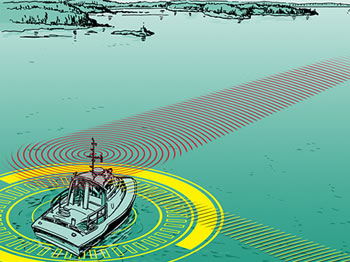When Maine Maritime Academy admitted its first class in October 1941,there was no question of what role the Regiment would play in the development and training of new Merchant Marine officers. Most of the world was at war, and while they did not know it, the United States would be, too, within a matter of weeks.
MMA’s first class of midshipmen, the “solid 28,” graduated in May of 1943 after a truncated course of studies. The graduates were commissioned as officers in the Merchant Marine and U.S. Naval Reserve and many immediately entered active duty or served aboard merchant vessels in support of the ongoing war effort. These graduates were often required to follow military discipline and command structure while serving in wartime conditions.
The hazards they faced were legendary: merchant mariners died at a rate of 1 in 26, which equated to the highest casualty rate of any military service.
Governance of the state maritime academies was the province of the U. S. Maritime Commission, a predecessor of the current U.S. Maritime Administration. Federal regulations required all state maritime academies to operate and train in a military structure to prepare graduates for their impending service. Faculty were required to have seagoing experience and, like the students, wore Navy-style uniforms. In addition to wearing service uniforms, students were indoctrinated into military command structures, lived within a strict code of conduct, and endured discipline through a demerit-based system, all to prepare them for service within or alongside the U.S. Navy.
...Read More-
 Smart Vessel Technology Comes to MMACollaborative project provides hands-on learning experiences for the latest vessel technology.
Smart Vessel Technology Comes to MMACollaborative project provides hands-on learning experiences for the latest vessel technology.
...Read More
